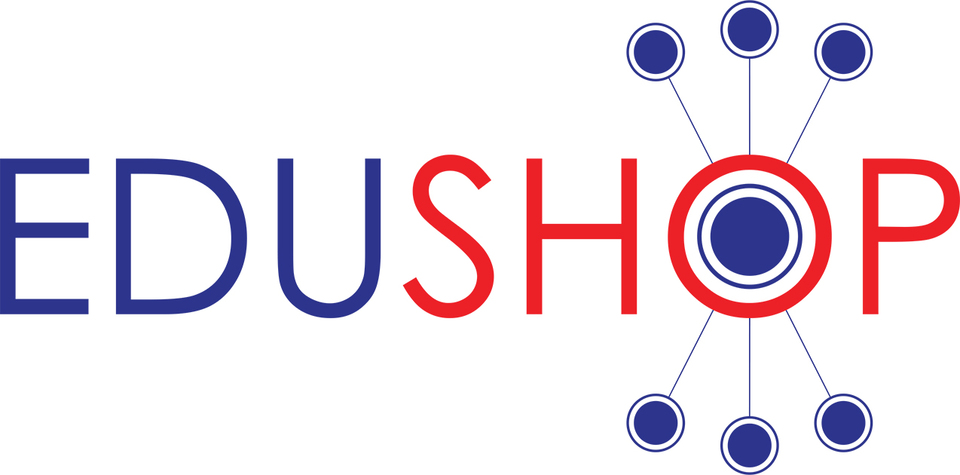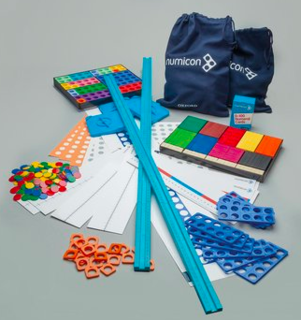- Home
- Numicon NZ Website
- About Us
- Numicon
- Professional Development/Events
- FREE online PD recordings
- Login
- Contact
- Join Mailing List
- Conference 2026
Big Ideas Teaching Guide
This is a 12-week programme for students not reaching age-related expectations from Year 5 onwards. Written by a team of experts, headed up by Steve Chinn, it includes an initial assessment then active and practical activities on Place Value, adding and subtracting, multiplying and dividing, Fractions, Working with fractions, decimals and percentages.
This teaching guide is used in conjunction with the Big Ideas Apparatus Pack (purchased separately).
1. Catch-up in weeks to support older learners who don’t have years to catch up with the slower regular-paced lessons in Numicon 3-5
2. Direct teaching begins with a review from Level 1 of the curriculum. Numicon 3 – 5 begins with just the previous year’s learning.
3. Greater emphasis on the language and interrelationships to correct wrong thinking.
4. Ongoing assessment at a micro-level to support corrected thinking and practice and embed confidence in new learning
5. Pitched at older learners who may be at Levels 1-2 of the curriculum.
This teaching guide is used in conjunction with the Big Ideas Apparatus Pack (purchased separately).
1. Catch-up in weeks to support older learners who don’t have years to catch up with the slower regular-paced lessons in Numicon 3-5
2. Direct teaching begins with a review from Level 1 of the curriculum. Numicon 3 – 5 begins with just the previous year’s learning.
3. Greater emphasis on the language and interrelationships to correct wrong thinking.
4. Ongoing assessment at a micro-level to support corrected thinking and practice and embed confidence in new learning
5. Pitched at older learners who may be at Levels 1-2 of the curriculum.
Information
Numicon Big Ideas is a programme of additional sessions for small groups or individuals.
- Focuses on key elements of the primary maths curriculum
- Aimed at students not meeting age-related expectations in Years 5 (aged 10 upwards).
- Lays the foundation for success at intermediate and secondary levels
- Gives support for end-of-primary assessments.
Features
- Numicon is research-based and proven to have a significant and lasting impact on results.
- Numicon Big Ideas includes an initial assessment and 48 step-by-step sessions across 5 key areas: Place Value, Adding and Subtracting, Multiplying and Dividing, Fractions, and Working with Fractions, Decimals and Percentages.
- The sessions are suitable for delivery by non-specialists and focus on strong re-teaching of key topics using an active, practical approach to support reasoning and mathematical conversation.
- The Teaching Guide introduces the Numicon approach, provides a full explanation of how to implement the programme, and offers expert advice on how to make the sessions most effective.
- Photocopy Masters to support the activities are included.
- (The sessions are supported by the separate Numicon Big Ideas Apparatus Pack.)
Steve Chinn is well known as an expert in the area of catch up (and intervention, Special education needs.)
Big Ideas is NOT…
- An intervention based on highly detailed diagnostic assessment (like NIP). It is quicker and therefore cannot be as rigorous.
- For Special education needs children who are behind and can be expected to catch up.
- Comprehensive… It can’t hope to cover the whole Levels 3 and 4 of the NZ curriculum, that’s why it focuses on the Big Ideas
- A crash course for preliminary entrance tests… It lays the necessary foundations for children to approach tests with confidence, but they would still need to do revision and practise test questions (recommend the Numicon book!)
Supporting Videos will be on OWL and Oxford Secondary
Features
Numicon Big Ideas is suitable for those pupils who have gaps in their understanding or have lost confidence in their ability to do mathematics.
The programme focusses on relearning and developing a secure understanding of essential number concepts from the earlier years that are the necesasary foundation for success at the next level.
Big Ideas comprises of a sequence of twelve units over twelve weeks broken into sessions.
Each unit builds upon ideas from the previous and it repeated in a spiral approach throughout the twelve weeks. Students are able to consolidate their understanding using this approach.
It is important that the units are taught in sequence.
The topics chosen are taken from areas where students show the most difficulty in testing situations and application to real-life situations.
These are the essential building blocks that support students in making connections across all other areas of mathematics. We as adults use these mathematical ideas in our everyday lives.
It is therefore, crucial that we give students the opportunity to master these concepts.
|
Unit 1: Familiarisation |
|
|
Unit 2: Number and place value |
Unit 7: Number and place value |
|
Unit 3: Adding and subtracting |
Unit 8: Adding and subtracting |
|
Unit 4: Multiplying and dividing |
Unit 9: Multiplying and dividing |
|
Unit 5: Fractions |
Unit 10: Fractions |
|
Unit 6: Working with fractions, decimals and percentages |
Unit 11: Working with fractions, decimals and percentages |
|
Unit 12: Securing the learning |
The programme is not designed to plug the gaps, but to help students secure their understanding of mathematical concepts to use them in everyday life and in testing situations. Making connections across the units is very important.
All students should particpate in all sessions. This ensures that any misunderstandings that were not obvious in previous sessions are identified. Students have the opportunity to work through mastery of ideas through activities which vary and extend the contexts.
For students who have a negative view of maths, it is important that we given them a safe environment and time. It is important they over-learn and experience the feeling of being successful. To support this, keep the groups the same working with the same teacher. Education is all about relationships.
Students are encouraged to keep their complete Learning Logs so that they can refer back to them in their in-class lessons. They will also have a record of their own learning.
It is suggested that the teacher sit alongside them after the twelve-week programme to support them in their lessons, reminding them what they can do and how to use the Numicon resources to communicate their ideas. This builds their confidence.
Regular reviews at four and eight weeks should be carried out to maintain learning. You will find those students who need continued support.
Some aspects of maths are not covered. These can be found in Numicon 5 and 6: integers, ratio, algebra, time, geometry and statistics.
Specifications
Contents
Numicon Big Ideas Teaching Pack contents:
Big Ideas Programme Guide:
- Getting Started for you as the teacher/teacher aide
- Knowing the apparatus in the Big Ideas Apparatus Pack
- Online tracking and video support links
- Introducing Numicon
- Numicon Teaching materials
- How to use the Big Ideas
- Dr Steve Chinn: Principals of effective 'catch-up'.
Assessment A and B to use at the beginning and end of the programme.
Planning and Session Activities
Photocopy Masters
Video
Reviews
School feedback
School 1
We use Big Ideas with our new students coming into year 7 at an intermediate school during the first term alongside other maths activities. We decided not to use the assessment tool to begin with because we knew it would expose the most challenged students' anxiety too much. Instead we gave them the assessment after a month and then at the end of the programme. This really paid off.
By using Big Ideas in this way we put most of the students on a more level beginning place to build the foundation of Number so that the teachers did not have such a wide reange of abilities to manage in the followig terms and years. We also discovered the students who need more indepth teaching that Big Ideas gives. We use Numicon 3 - 6 for these students working at their pace of learning.
School 2
2018 We began using Numicon across the whole school. The Year 6 cohort used Big Ideas in daily Maths lesson as an introduction and catch-up.
1. All students were evaluated using the Big Ideas assessment and PAT’s.
2. Using this information, the children were put into small groups for 4 out of 5 Maths lessons across the week. 3. The least able joined the Big Ideas group taught by TA. They made significant progress over the year.
4. The 3 other groups were taught by teachers using Numicon 5, and dipping into Big Ideas as needed for background work.
5. There was one central plan with key objectives and suggested activities from Numicon 5 and Big Ideas.
2019 Year 6 cohort- Big Ideas used in addition to daily Maths lesson. This cohort had fewer gaps due to having more quality first Numicon Maths teaching the previous year.
1. All students were evaluated using the Big Ideas assessment and baseline results from the PAT’s
2. The students who were not on track to achieve end of year expectations and lacked confidence in Maths were selected for the Big Ideas group.
3. We ran the Big Ideas intervention group 3 times a week for 40 minutes, in addition to quality first teaching in our daily Maths lessons. These children made significant progress.
School 3
Our Year 6 students had huge gaps in their Maths learning. There wasn’t a consistent approach across the school. As a result, we started using Numicon as a whole school approach in January 2017.
During the past 2 years we’ve used Big Ideas at the beginning of the school year with our Year 6’s. We’ve seen sustained improvement. To account for the positive evidence that Big Ideas has had, we tested the pupils using the previous year’s Maths PAT’s and the assessment in Big Ideas.
Students have enjoyed the activities and were keen to take part. Over-teaching of mathematical vocabulary has helped students to have a better understanding when solving word problems. In particular, the students became more confident in areas such as fractions. Students also made connections to other areas of learning, for example, in place value connected to decimals. Maths reasoning improved and connections were made more often.
The students enjoyed the activities and they had fun working through them. Students felt the programme supported their learning in the classroom as the activities, methods and manipulatives were similar. Some pupils commented that being in a small group and explaining their thinking was less intimidating than in a class. The students were keen to come to the sessions and wanted to know when the next session was. Students reported that they particularly enjoyed activities that went ‘around the circle’ i.e. chanting tables, place value game and activities that involved ‘doing’ rather than listening – for example, place value activities that used manipulatives.
Associated Items
View your shopping basket or Browse other items in All Products.


